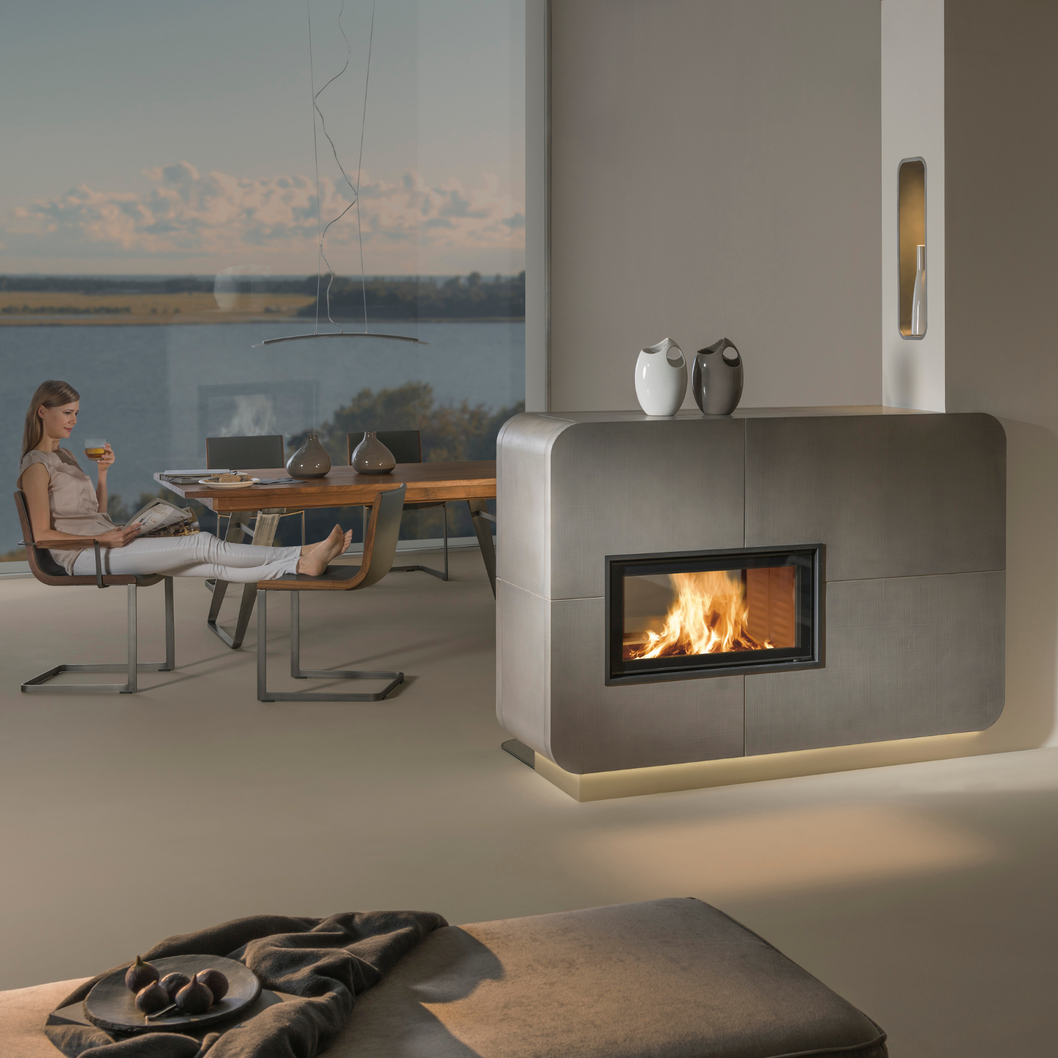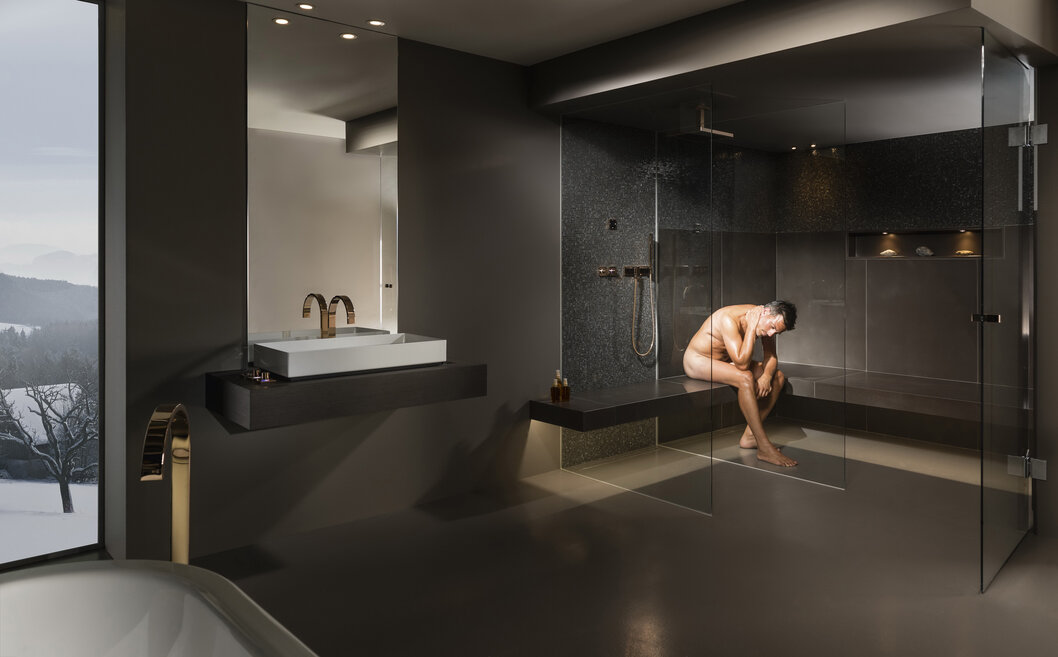At what stage of construction is it recommended to plan and install the tiled stove/tiled fireplace, and what needs to be considered?During the planning phase of your home, it is essential to provide a solid foundation for installing a tiled stove or tiled fireplace. A typical tiled stove weighs around 1,000 kg, while a tiled fireplace weighs approximately 600–700 kg. The installation takes place during the shell construction phase—after the screed has been laid but before installing wooden floors, tiling, and painting. Keep in mind that the production time is approximately 6–8 weeks, and the installation itself takes about one week. For tiled fireplaces, which feature visible flames, a larger chimney cross-section is recommended compared to tiled stoves. Additionally, the required dimensions of your chimney will vary depending on the stove type, room height, and the location of your home.
When are the tiled stove showroom and the tiled stove museum open, and what are the office hours?Our tiled stove showroom and tiled stove museum are open to visitors from Wednesday to Friday from 9 AM to 5 PM and on Saturday from 9 AM to 1 PM. If you would like a detailed consultation or a guided tour of the museum, we would be happy to arrange an appointment. Our office hours are Monday to Thursday from 7 AM to 3 PM and Friday from 7 AM to 12 PM.
What are the advantages of Sommerhuber heat storing ceramics?Our heat storing ceramics release warmth in the form of long-wave infrared radiant heat. Thanks to their special mass, stove tiles distribute heat evenly over many hours. Unlike conventional heating systems, this gentle radiant warmth heats the surfaces of walls and solid objects in the room rather than the air itself. This effect ensures a consistent room temperature without overheating. The air remains fresh and clean, creating a healthy and pleasant indoor climate. The energy-efficient heat storing ceramics provide infrared heat radiation, which has been proven to promote circulation, relieve muscle tension, and enhance overall well-being. Since no dust is stirred up, allergy sufferers particularly benefit from improved air quality and easier breathing. Additionally, infrared heat strengthens the immune system, calms the autonomic nervous system, and supports the body’s detoxification and relaxation processes. For optimal physical relaxation, our ergonomically designed large-format ceramics provide superior comfort. Learn more about our heat storing ceramics here.
Tiled stove or tiled fireplace?The tiled stove represents gentle heat storage, while the tiled fireplace is all about the experience of fire. Often, hybrid designs are created, tailored to the specific living situation. Therefore, it is important to coordinate the desired heating output in relation to the living space during the planning phase. To reduce heating output (kW) and avoid overheating the room, smaller viewing areas combined with larger ceramic storage surfaces are beneficial. These surfaces store heat and release it evenly over many hours.
Heat storing ceramic tile, sanitary tile or plaster?The heat storing ceramic tile primarily serves a heat storage function, and its main applications are in living areas and surfaces that are in contact with the body. In contrast, sanitary tiles are dense and do not store heat. They serve primarily a hygienic function and are typically used in bathrooms, kitchens, and as flooring. Heat storing ceramic tiles are very easy to maintain; simply wiping them with a damp cloth is enough. Plastered surfaces, on the other hand, should be repainted annually. Heat storing ceramic tiles, being a natural product, provide comforting radiant heat because they have the natural ability to store heat and release it slowly and evenly into the room. Their glazed surface is soothing and silky-soft, inviting you to lean against it. This cozy warmth positively influences the human body, promoting relaxation and health.
How much does a tiled stove cost?The design of your tiled stove/tiled fireplace is entirely based on your preferences, technical requirements, and visual design. Depending on the construction type, architectural complexity and desired design, the acquisition costs vary. For a permanently installed stove - like our tiled stoves/tiled fireplaces - expect to invest starting from €11,000. Especially in times of rising energy costs, a tiled stove makes you independent from energy market price fluctuations and provides a long-term, cost-effective heating solution that can also positively influence the value of your property.
How to heat properly?Never load too much wood fuel at once. The rule is: it's better to add a bit more wood fuel than to overload it. On the other hand, you should not keep your tiled stove/tiled fireplace constantly on "low flame" either, as the necessary temperatures for a clean combustion will not be reached. Always check the user manual or ask your stove specialist for the optimal wood amount. When starting the fire, ensure sufficient combustion air by fully opening the air slider at the beginning. After about 20 minutes, reduce the airflow slightly. Once the fuel has burned down, close the combustion air completely. Store firewood in a sunny spot with good air circulation for at least 2 years, with a moisture level under 15%. Before lighting the stove, store the wood indoors for 2–3 days. The drier the wood, the better the combustion quality and the more beautiful the flame.


